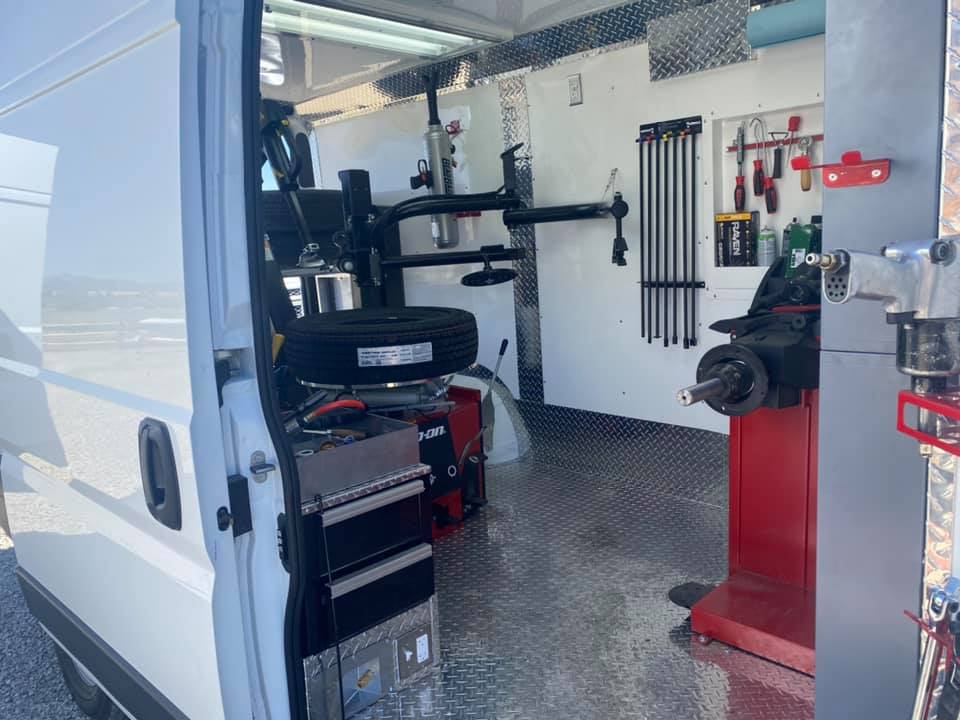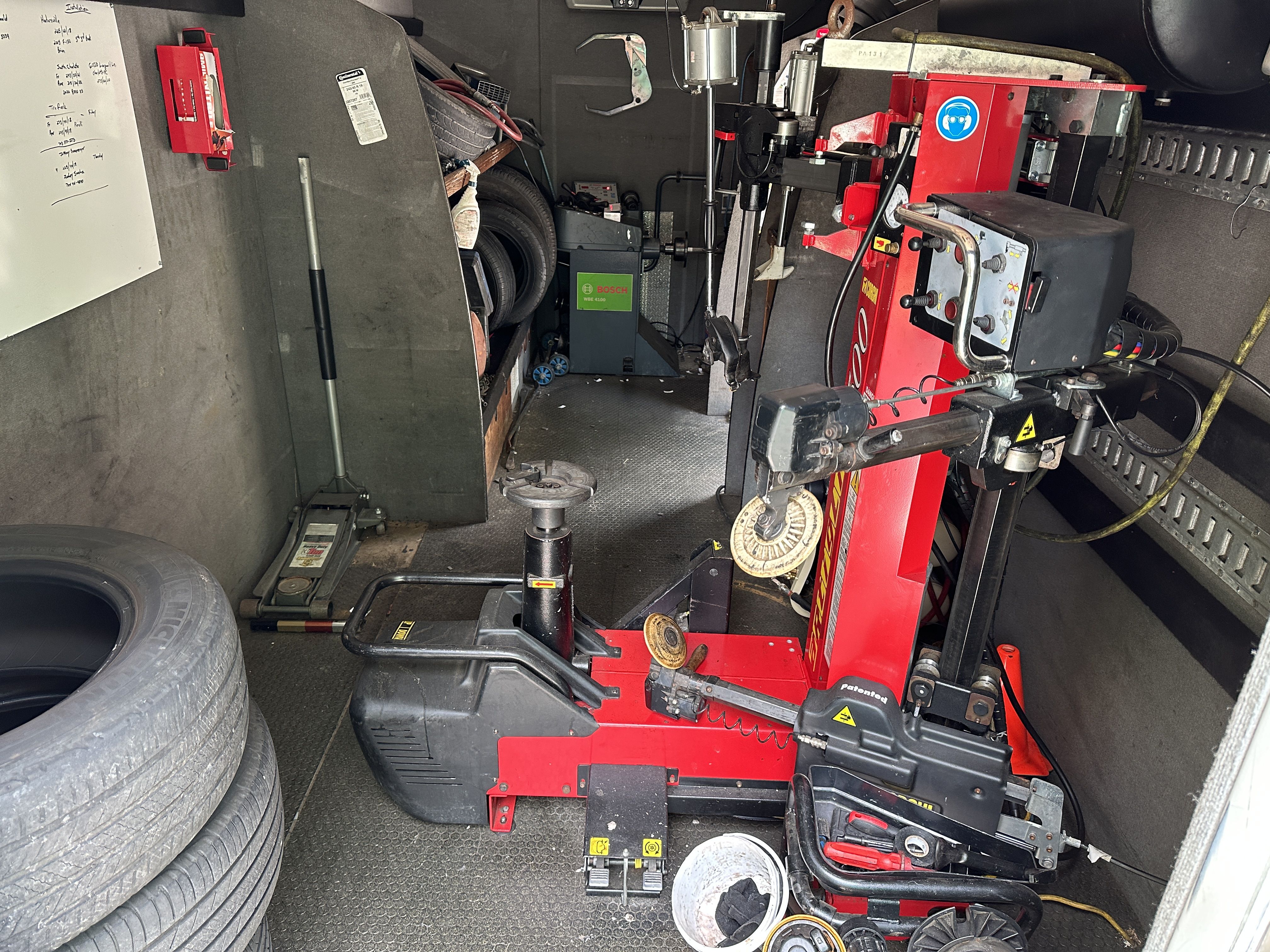Specialist Mobile Tire Repair in Las Vegas - Quick Service Ensured
Specialist Mobile Tire Repair in Las Vegas - Quick Service Ensured
Blog Article
Tire Service: Proven Approaches for Ideal Tire Upkeep and Care
Keeping ideal tire problem is vital for both security and efficiency of any type of lorry. From making sure proper tire pressure to normal rotation and placement, there are tested methods that can dramatically extend the life-span of your tires and enhance general driving experience. As we discover the complexities of tire treatment and maintenance, we will reveal necessary guidelines that every car proprietor ought to stick to for the best possible outcomes. Allow's explore the world of tire service and uncover the secrets to keeping your tires in excellent shape for the long run.
Relevance of Tire Pressure
Appropriate tire pressure is an essential variable in ensuring optimum vehicle performance and safety when driving. Maintaining the suggested tire pressure levels offered by the manufacturer provides various benefits. Adequate tire pressure promotes far better gas effectiveness, as under-inflated tires can lead to enhanced rolling resistance, causing the engine to work tougher and eat more fuel. Secondly, correct tire stress ensures also walk wear, improving tire longevity and conserving cash in the future by delaying the requirement for premature replacements. Furthermore, properly blew up tires contribute to improved handling and stopping abilities, important for safe driving in various roadway conditions. Over-inflated tires, on the various other hand, can lead to reduced traction and a harsher ride. Alternatively, under-inflated tires are susceptible to overheating, which can cause blowouts and mishaps. Regularly inspecting and adjusting tire stress, particularly eventually trips, is a simple yet efficient way to improve lorry performance, expand tire lifespan, and focus on safety when traveling.
Tire Rotation Guidelines
When considering tire rotation guidelines, it is important to recognize the relevance of this maintenance task in making best use of tire life expectancy and maintaining optimal automobile efficiency. Tire turning entails transforming the placement of each tire on an automobile to make sure also walk wear. Front tires have a tendency to use quicker than rear tires due to steering pressures, making routine rotation essential for balanced wear patterns. The recommended turning pattern differs depending upon whether a car is front-wheel, rear-wheel, all-wheel, or 4x4. Normally, tires must be revolved every 5,000 to 7,500 miles, or as advised in the car guidebook. Disregarding tire turning can cause uneven wear, affecting handling, grip, and potentially compromising vehicle safety and security. By sticking to appropriate turning standards, chauffeurs can extend the life of their tires, boost fuel efficiency, and boost general driving experience. Regular rotation is a simple yet effective upkeep technique that adds dramatically to tire durability and vehicle efficiency.

Advantages of Wheel Positioning
Making sure correct wheel alignment after tire rotation is critical for maintaining balanced wear patterns and optimizing vehicle performance. Wheel positioning describes the change of the angles of the wheels to the manufacturer's specs. One of the crucial advantages of wheel placement is improved dealing with and steering action. When the wheels are correctly straightened, it reduces steering effort, guaranteeing a smoother and a lot more regulated driving experience. Furthermore, proper wheel alignment aids to expand the life-span of your tires. Misaligned wheels can create irregular tire wear, bring about early tire substitute and raised upkeep prices.

Tire Tread Deepness Check
Doing a normal examination of tire step deepness is vital for maintaining risk-free driving problems and prolonging the life expectancy of your tires. The step on your tires plays a vital duty in providing traction, especially in damp or unsafe problems. To examine your tire tread depth, you can use a walk depth scale or the cent examination. The recommended walk deepness goes to the very least 2/32 of an inch. It is time to change your tires to ensure optimal performance and safety on the road if the tread deepness is listed below this limit. Irregular step wear can suggest problems with tire pressure, suspension, or positioning, highlighting the importance of regular step deepness checks. Ignoring to monitor and maintain proper step deepness can cause minimized hold, longer braking ranges, and a raised danger of hydroplaning. By integrating tire tread deepness checks right into your regular upkeep routine, you can drive with confidence knowing that your tires remain in leading condition.
Seasonal Tire Assessment
Seasonal tire examination is a basic element of tire upkeep that guarantees tires are ready to face the challenges postured by different weather problems. In preparation for winter why not try these out season, it is necessary to inspect the tire stress consistently as cold temperature levels can trigger tire pressure to drop. By performing regular seasonal tire evaluations, chauffeurs can lengthen tire life-span, improve fuel performance, and most significantly, guarantee a secure driving experience in differing weather condition problems.
Conclusion
In conclusion, keeping appropriate tire stress, turning tires frequently, aligning wheels appropriately, checking walk deepness, and carrying out seasonal inspections are crucial methods for optimum tire care. By adhering to these shown approaches, chauffeurs can guarantee their tires last longer, execute much better, and add to overall lorry security. It is important to prioritize tire maintenance to avoid crashes, improve gas performance, and prolong the life-span of tires.
Sufficient tire stress advertises better fuel performance, as under-inflated tires can lead to increased rolling resistance, triggering the engine to function tougher and take in even more gas.When thinking about tire turning standards, it is important to comprehend the browse around this site relevance of this maintenance task in maximizing tire life expectancy and preserving optimum vehicle performance. Seasonal tire assessment is a basic facet of tire maintenance that guarantees tires are prepared to deal with the obstacles postured by various weather conditions. By carrying out routine seasonal tire assessments, vehicle drivers can lengthen tire lifespan, enhance fuel efficiency, and most importantly, guarantee a protected driving experience in varying weather condition conditions.
In final thought, preserving appropriate tire pressure, turning tires frequently, aligning wheels correctly, keeping an eye on walk depth, and carrying out seasonal evaluations are important practices for optimal tire treatment.
Report this page